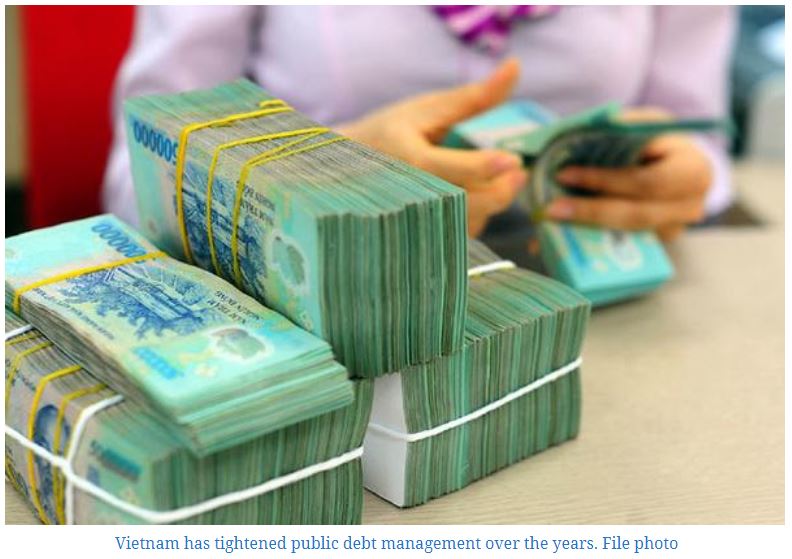Vietnam’s public debt drops sharply to 41.3% of GDP
Japan, South Korea, France, and Germany are the largest creditors of Vietnam.
Vietnam’s public debt was on a steady decline during the past five years from 61.4% of the GDP in 2017 to 43.1% in 2021, significantly lower than the 60%-threshold limit set by the National Assembly.
Given the country’s nominal GDP in 2021 at $368 billion, the public debt was equivalent to VND3,600 trillion ($157 billion), as shown by a report from the Ministry of Finance (MoF).
In addition, the MoF also noted a similar downtrend in Government debts, Government-guaranteed debts, and debts of provinces/cities. In this regard, Government debts went down from 51.7% of the GDP in 2017 to 39.1% in 2021, or $144 billion.
Government-guaranteed debts decreased by 2.5-fold after five years from 9.1% in 2017 to 3.8% in 2021, or $14 billion.
Debts of provinces/cities stood at 0.6% of the GDP, down 0.5% from five years ago, while Vietnam’s foreign debts by the end of 2021 were estimated at 38.4% of the GDP, lower than the 49% recorded in 2017.
In contrast to declining foreign debt, Vietnam’s domestic obligations rose to VND2,200 trillion ($94 billion), or 67.2% of the Government’s total outstanding loans.
The MoF’s report added Vietnam’s debt repayment obligation and that of the Government slightly increased last year, reaching 6.8% of total exports and 21.8% of the budget revenue.
“Japan, South Korea, France, and Germany are Vietnam’s largest creditors,” added the MoF.
By the end of 2021, Japan lent over VND316 trillion ($13.5 billion) to Vietnam, followed by South Korea (over VND32 trillion or $1.36 billion), and France (VND30 trillion or $1.28 billion).
Meanwhile, the World Bank remains Vietnam’s largest creditor among multilateral partners providing loans worth VND380 trillion ($16.2 billion), and the Asian Development Bank (ADB) stays second (VND188 trillion or $8 billion).
This year, the Government expects to borrow a maximum of VND675.5 trillion ($30 billion), 96% of which is to balance the state budget, and the remaining for on-lent loans.
In case of positive economic performance in 2022, the Government estimates the public debt to be around 43-44% of the GDP, Government debt to account for 40-41%, the foreign debt to represent 40-41%; and the Government’s direct debt payment obligation equivalent to 21-22% of the budget revenue, below the 25% limit.
According to the Government’s public debt strategy released in April, public debt by 2030 would stay below 60% of the GDP, Government debt under 50%, foreign debt below 45%, and the Government’s direct debt payment obligation below 25% of the budget revenue.
Vice Minister of Finance Ta Anh Tuan noted such targets are based on the country’s socio-economic development plan for the 2021-2030 period, in which the Government expects the average GDP growth in the 2021-2025 period at 7% per annum; GDP per capita by 2030 at $7,500; and the budget deficit making up 3% GDP by 2030.
Director of the MoF’s Department of Debt Management and External Finance Truong Hung Long noted Vietnam is currently adopting two public debt management models, including the Medium-term Debt Management Strategy (MTDS) developed by the IMF, and the Debt Sustainability Analysis (DSA) from the World Bank.
“Based on these two models, the MoF has set up various scenarios for public debt management until 2030 to best reflect the current situation and ensure national financial security in the long-term,” Long said.
Source: https://hanoitimes.vn/vietnams-public-debt-drops-sharply-to-413-of-gdp-321580.html


 English
English




